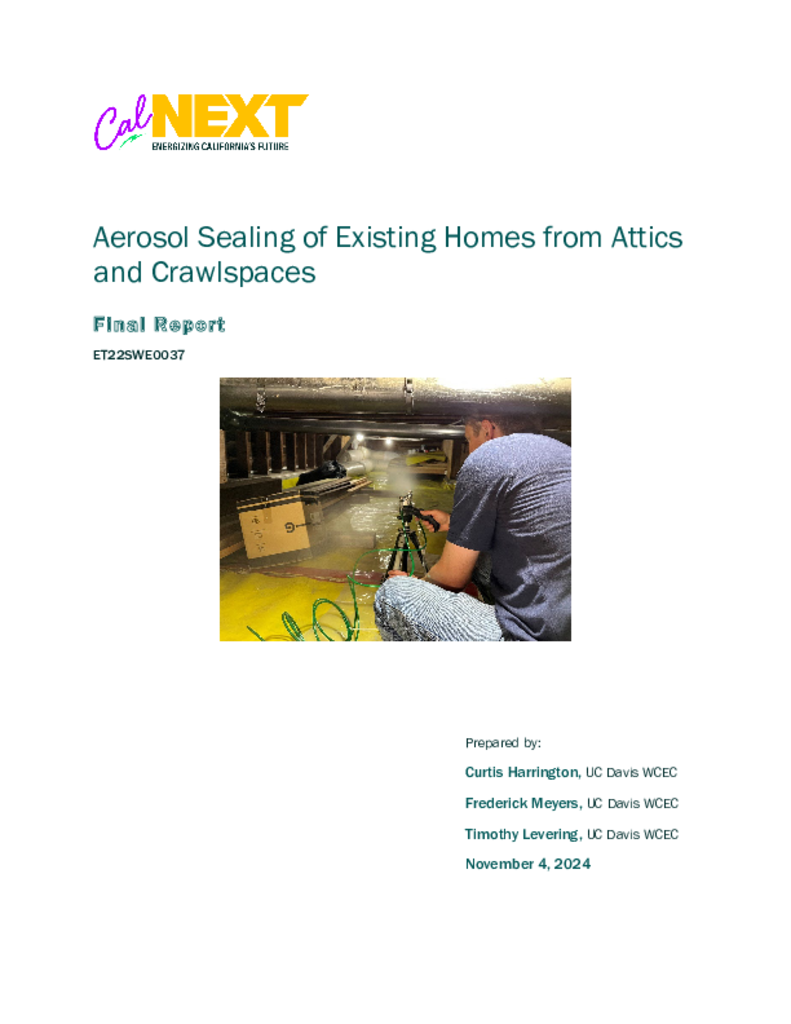ET22SWE0037 - Aerosol Sealing of Existing Attics and Crawlspaces
This project will evaluate new applications of aerosol sealing, a product used to seal buildings primiarily in new construction, to sealing in existing homes. Previous studies have shown that half of the leakage in new California homes occurs through the attic so addressing leakage at the attic floor has a significant potential to reduce total envelope leakage. A recently completed demonstration as part of a DOE Building America project showed very encouraging results when applying an aerosol sealing technology to an existing attic. Three apartments were sealed by an average of 55% when the aerosol sealing technology was deployed from the attic space. Only the attic floor is sealed allowing the attic to remain ventilated and avoiding any potential issues with condensation that occur in a fully sealed attic. This was compared to two other sealing approaches including traditional manual sealing with foam and an elastomeric sealant which achieved 14% and 26% reductions, respectively. In the past, utilization of aerosol envelope sealing was limited to new construction or major retrofit situations. A key advantage of applying the aerosol from the attic is that there is not noticeable deposition of sealant on surfaces inside the home so surface protection requirements are minimal. In the three applications performed, no prep to interior surfaces was performed, reducing the time and cost for sealing and opening up the market to sealing occupied homes. While the tenants do need to leave the home for a couple of hours during the aerosol injection, the process is much less invasive than other retrofit applications of aerosol sealing and is not harmful to occupants. This project will demonstrate the cost and performance of an attic upgrade that includes upgrading existing insulation combined with aerosol-sealing of the attic-to-home leakage in residential building types typically found in disadvantaged communities. The previous study demonstrating this technique was limited to three apartments and this study is needed to demonstrate in single family homes and evaluate performance across more sites.
Retrofit air sealing of homes provides a significant opportunity for reducing residential energy use. According to results published on the impact of retrofit air sealing in single-family homes in California, reducing envelope leakage by 50% would result in 7-15% reduction in heating and cooling energy use. This project developed and tested new applications of aerosol envelope sealing that allows the process to be applied to existing occupied homes. The new method avoids issues related to unwanted deposition of sealant particles on finished surfaces in the home by applying the technology from the outside of home in a ventilated attic or crawlspace. This project found that the aerosol sealing process was much more effective at sealing envelope leakage compared to traditional methods. Across 13 demonstrations, the aerosol sealing process sealed an average of 40% of the existing home leakage compared to just 14% sealed using the common manual sealing approach.

